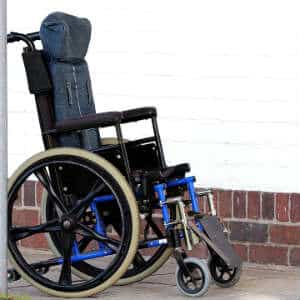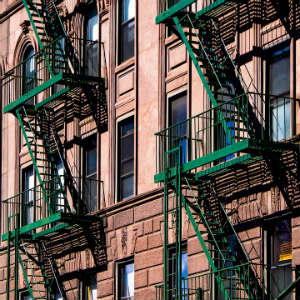 In 2008, Sasha Klupchak was a normal college student at NYU who was working hard to earn her degree and at the same time finding time to hang out with friends. She was both a varsity soccer player and also an honor student. One night, when visiting a friend’s apartment, she did what countless others have done - she stepped out on the fire escape of the East Village walkup to smoke with her friend.
In 2008, Sasha Klupchak was a normal college student at NYU who was working hard to earn her degree and at the same time finding time to hang out with friends. She was both a varsity soccer player and also an honor student. One night, when visiting a friend’s apartment, she did what countless others have done - she stepped out on the fire escape of the East Village walkup to smoke with her friend.
Visit our dedicated premises liability page to learn more: https://banvillelaw.com/personal-injury/premises-liability/
When they were finished, the two went to climb back in through the kitchen window. That’s when she misstepped and fell through an unguarded opening. She fell a total of 12 feet and landed on the neighbor's roof. The impact severed her spinal cord and paralyzed her from the waist down.
In 2009, after spending some time recovering from her injuries, she filed a lawsuit against the building’s owner alleging that he was responsible for her accident because the type of fire escape that was alongside the building, which consisted of ladders and platforms instead of staircases, had been outlawed in 1949.
 Prior to going to trial, the plaintiff’s attorney created an unusual and uncommon deal with the defense team called a “high low settlement”. The deal was that the case would go to trial and if the jury returned with an award of less than $13 million, then the defense would pay $13 million. However, if the verdict was for an amount higher than $29 million, then the $29 million would be the maximum paid.
Prior to going to trial, the plaintiff’s attorney created an unusual and uncommon deal with the defense team called a “high low settlement”. The deal was that the case would go to trial and if the jury returned with an award of less than $13 million, then the defense would pay $13 million. However, if the verdict was for an amount higher than $29 million, then the $29 million would be the maximum paid.
The case was presented and the plaintiff’s attorney included evidence which showed the fire escape had been outlawed, that there was nothing in the friend’s lease which prohibited the use of the fire escape for outdoor purposes, and then had the building owner admit that “tens of thousands” of New York residents regularly hang out on fire escapes.
After taking this information the jury deliberated for a total of three days then determined that the plaintiff should be awarded $39.5 million. This meant that, per the deal made prior to trial, she goes home with $29 million.
According to the Christopher and Dana Reeve Foundation, on average it costs patients with paraplegia $518,904 for the medical treatments that they need in just the first year. Then, every year after that, their medical costs average $68,739.
These costs are on top of everyday bills which many accident victims are already struggling to pay because they’ve had to adjust to a new way of life. Even with insurance, it’s easy for the patient to struggle financially and suffer physically because they are unable to juggle their expenses.
This is why so many victims choose to pursue a lawsuit against the party whose negligence resulted in their injury. Through an award, they can obtain the money they need to move forward.
This entire case was based on premise liability law which requires the owners and managers of a property to routinely check their land and buildings for hazards and repair any that are found. This also means that as safety standards are updated, owners must change their property to match those standards, like replacing fire escapes that are no longer allowed.
The law states that a property must be inspected in a reasonable amount of time, which can make a case complicated because no two properties are alike. For example, it’s much more reasonable to expect that as a three-story apartment building will be walked through and looked over every few weeks than it is to expect that a 1,000-acre farm will be looked over every few weeks.
This is why it is important for the victims of accidents to contact an attorney as soon as possible. Without an attorney's help, they may be unable to collect the evidence that is needed to prove their case.
Further reading: